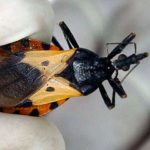A groundbreaking review published in the Journal of Exposure Science and Environmental Epidemiology has unveiled alarming insights into human exposure to food contact chemicals (FCCs). The study, a comprehensive analysis conducted by a team from the Food Packaging Forum and several academic institutions, has identified 3,601 chemicals from food packaging and other food contact materials present in human bodies.
This first-of-its-kind review compared data from over 14,000 known FCCs against human biomonitoring programs, metabolome/exposome databases, and the scientific literature. The findings reveal that 25% of known FCCs are detectable in human samples, such as urine, blood, and breast milk.
Dr. Birgit Geueke, co-author of the study, emphasizes the significance of these findings: “Our research establishes a clear link between food contact chemicals, their exposure, and potential health impacts. It reveals overlooked chemicals in current biomonitoring efforts and underscores the need for enhanced prevention and protection measures.”
The study highlights the prevalent presence of hazardous chemicals like bisphenols, PFAS, phthalates, metals, and volatile organic compounds in human samples and food contact materials. Many of these substances are known to have adverse health effects. Dr. Jane Muncke, another co-author, expressed concern over the safety of food contact materials, stating, “This research shows that even if food contact materials meet current regulations, they can still transfer harmful chemicals to people. We hope this evidence will drive improvements in safety regulations and the development of safer alternatives.”
Despite these findings, the study also reveals significant gaps in understanding the fate and effects of certain chemicals, such as synthetic antioxidants and oligomers, in humans. Dr. Ksenia Groh from the Swiss Federal Institute of Aquatic Science and Technology points out the lack of comprehensive data on these substances, noting, “Antioxidants, despite their extensive use in plastics, are largely absent from monitoring programs. There is a pressing need for more knowledge about their metabolism and effects.”
The research highlights that the actual number of FCCs present in humans is likely higher than detected, as only a subset of chemicals was thoroughly investigated. Prof. Dr. Martin Scheringer from ETH Zürich remarks, “The presence of numerous hazardous chemicals in food contact materials, which eventually reach the human body, is concerning. This underscores the urgent need for safer and simpler food contact materials.”
The study’s findings aim to fill critical knowledge gaps regarding human exposure to FCCs and their health impacts. Dr. Geueke concludes, “Our research highlights overlooked chemicals and supports the need for safer food contact materials. It provides a valuable foundation for future research and regulatory improvements.”
The detailed data is accessible through the FCChumon database, an interactive tool built upon previous databases like FCCdb and FCCmigex. This work is part of the Food Contact Chemicals & Human Health (FCCH) project.
For more information, refer to the study titled Evidence for Widespread Human Exposure to Food Contact Chemicals published in the Journal of Exposure Science & Environmental Epidemiology (2024). DOI: 10.1038/s41370-024-00718-2.












